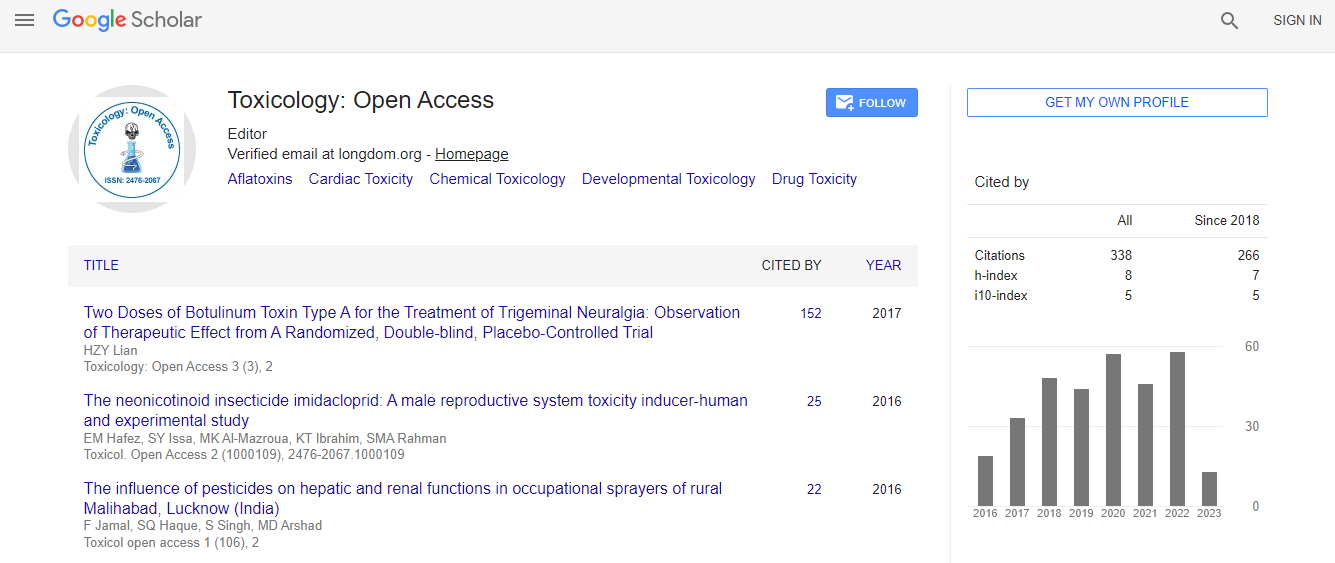Our Group organises 3000+ Global Conferenceseries Events every year across USA, Europe & Asia with support from 1000 more scientific Societies and Publishes 700+ Open Access Journals which contains over 50000 eminent personalities, reputed scientists as editorial board members.
Open Access Journals gaining more Readers and Citations
700 Journals and 15,000,000 Readers Each Journal is getting 25,000+ Readers
Google Scholar citation report
Citations : 336
Toxicology: Open Access received 336 citations as per Google Scholar report
Indexed In
- Google Scholar
- RefSeek
- Hamdard University
- EBSCO A-Z
- Geneva Foundation for Medical Education and Research
- Euro Pub
- ICMJE
Useful Links
Related Subjects
Share This Page
Pattern of ocular toxicity in patients on antipsychotic drug therapy at Alexandria Main University Hospital
14th World Congress on Toxicology and Pharmacology
Wafaa Mohamed El Sehly, Rania Abdelmegid Ahmed Kaka, Jiddaa Farouk Mekky, Karim Nabil Mahmoud and Magda Hassan Mabrouk Soffar
Alexandria University, Egypt
Posters & Accepted Abstracts: Toxicol Open Access

 Spanish
Spanish  Chinese
Chinese  Russian
Russian  German
German  French
French  Japanese
Japanese  Portuguese
Portuguese  Hindi
Hindi 